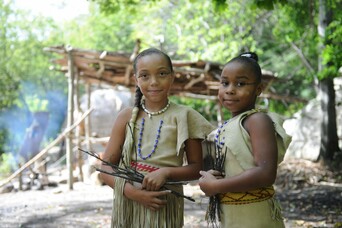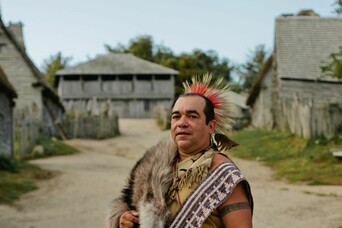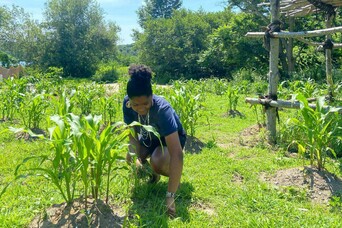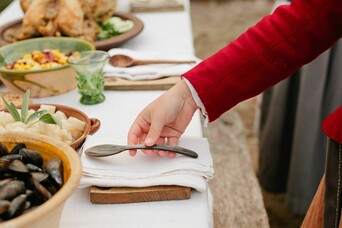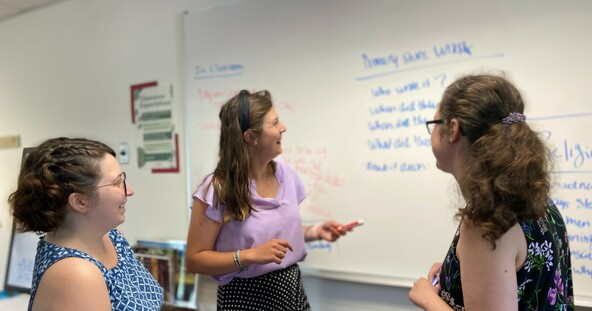
Teacher Toolkit Overview
This Teacher Toolkit includes five primary source units that correspond to an interactive module in You Are The Historian: Investigating the First Thanksgiving.
While these five units are designed to enhance the digital experience for students, you can also use them to supplement stand-alone in-class lessons or units of study. You may choose to use these materials to prepare for a project or in-class lesson, accompany use of the game during a class period, or prepare for an in-person or in-school field trip experience with Plimoth Patuxet Museums.
Each unit aligns with the Massachusetts Social Studies Framework and the National Association for Social Studies College, Career, and Civics (C3) Framework and includes:
- An overview introducing key ideas and essential questions to guide inquiry.
- A set of primary sources including objects, maps, oral histories, and historical documents. Each item has a profile sheet with additional background information about the object and suggested discussion questions easily adaptable for a range of grade levels.
- Suggested activities which bring together multiple items in the unit and can be adapted to suit your curricular goals and students’ needs.
Unit 1 Patuxet
In this unit, students use archaeological material, maps, and excerpts from written sources to explore how Wampanoag culture transformed between the end of the last Ice Age 11,500 years ago and the arrival of Mayflower in 1620. Materials explore how Wampanoag people adapted to changing climates and ecosystems and built political, economic, and kinship networks of independent communities across the region before and after Europeans first inserted themselves into those networks. Upon completion, students should understand that Wampanoag people have (and continue to live) in their homelands for thousands of years, but not in stasis.
Unit 2 Leadership & Diplomacy
In this unit, students explore the agreement made between Massasoit (Ousamequin), sachem of Pokanoket, his brother Quadequina, and Plymouth Colony’s elected governor, John Carver, and others. In this unit, students will use excerpts from written sources to explore why an agreement made sense, and how it may have informed key diplomatic events from the summer of 1621 through the harvest celebration later that year. Students will also use traditions such as wampum belts, gift-giving, and feasting to explore diplomacy and alliance-making.
Unit 3 Growing Corn in Plymouth and Patuxet
This unit supports students’ exploration of corn as both a primary source and the central feature of the harvest celebrated in Fall 1621. Students will explore Tisquantum as a transatlantic historical figure, learn about the role of corn and other arable crops in the daily lives of Wampanoag and colonial English families, and use original and reproduction objects and historical images to compare and contrast agricultural practices and cultural perspectives on growing corn.
Unit 4 1621 Harvest Celebration
In this unit, students will investigate the only surviving eyewitness account of the 1621 harvest feast and use other complementary sources to deepen their understanding of the spiritual world views, particularly around gratitude, which formed the foundation of events over the three days. Students will also explore how the 1621 harvest feast came to be known as the First Thanksgiving over the next 200 years and how the meaning of the holiday changes as new meaning is layered.
Unit 5 Giving Thanks
Americans have long thought the history of the American holiday Thanksgiving to be relatively simple. The actual story of how the story of “the First Thanksgiving” was written and retold and how the holiday was developed and embraced by a nation is surprisingly complex. In many respects, the growth of the distinctly American holiday and the myth associated with it parallels (and continues to parallel) the development of the nation itself. In this unit, students will explore how the 1621 harvest feast came to be known as the First Thanksgiving, the country’s protean holiday, and how the meaning of the holiday changes as new meaning is layered.
